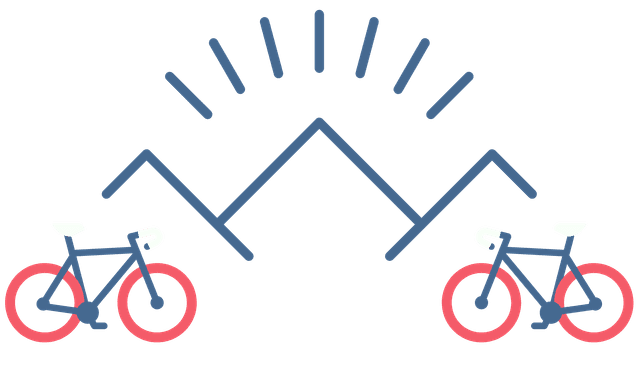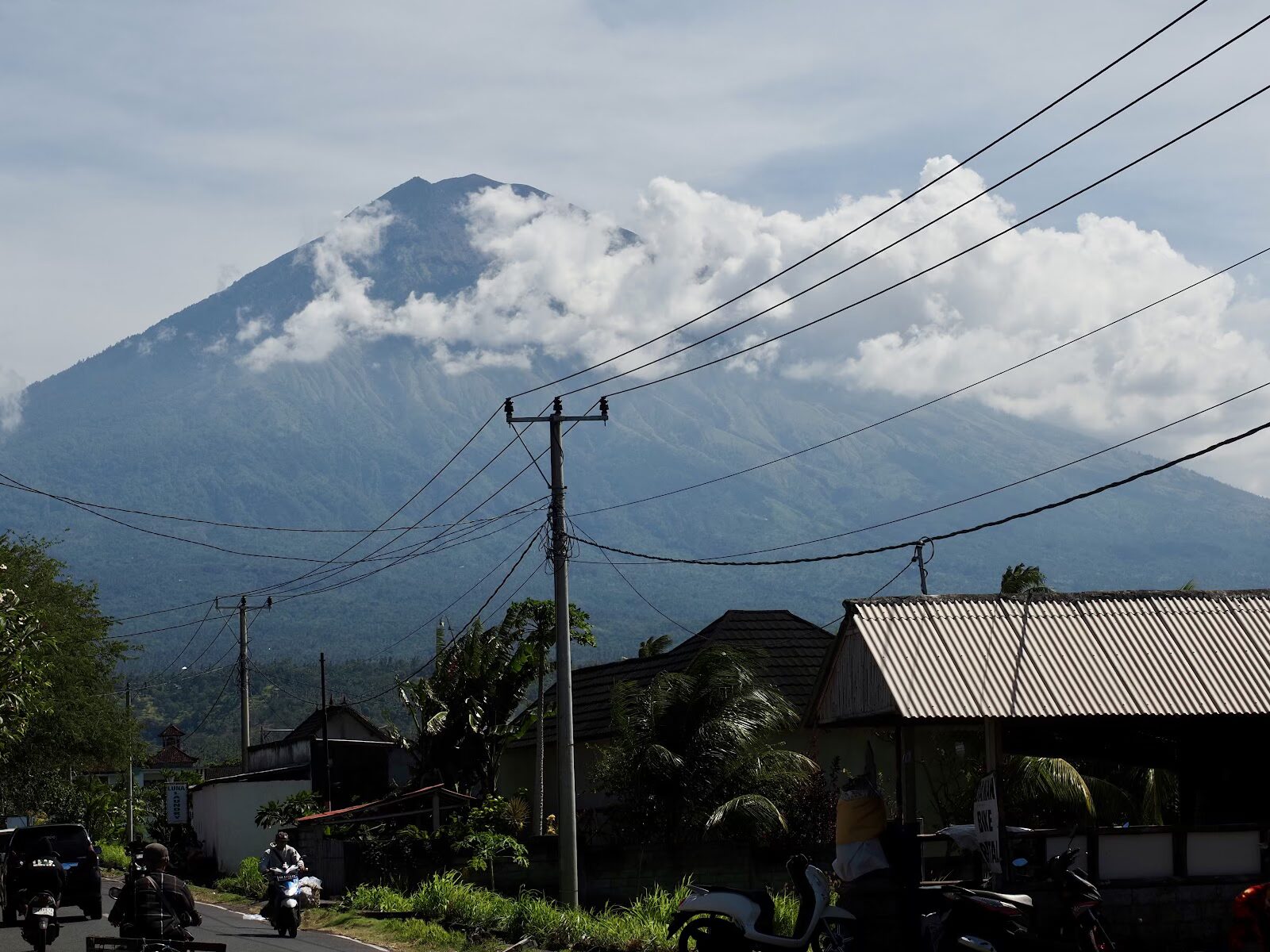Cycling New Zealand: West Coast
Mon Mar 17 2025
|Conor and AlinaThe Beauty, The Sandflies, The Rain
The West Coast of the South Island is defined by three major factors: its natural beauty, its sandflies, and its inclement weather.
Whenever we let the locals know that we were heading to the West Coast, they all repeated the same line: “The West Coast is beautiful, but bro, the sandflies are terrible, and the rain, it is wet as!” This was usually followed by a war story or two about a challenging time they had there. All the stories heavily featured aggressive biting sandflies and fat raindrops as their main characters.
We had been enjoying an extended period of relaxed and leisurely riding as we ambled towards the West Coast on the South Island. In general, the roads on the South Island are much quieter than those on the North Island, and paradoxically, it also has flatter riding, despite having New Zealand’s largest mountain range, the Southern Alps, running along its spine. The North Island was much lumpier and congested by comparison.
Our plan was very simple. We were going to follow State Highway 6 (SH6) for the next 700 km. We knew that there were some glaciers, a bike track (the Wilderness Trail), and some “Pancake Rocks” on the way. Of course, we also knew that there would be plenty of rain and sandflies to accompany us on our journey, but apart from that, we did not know much about what we would be doing or seeing along the way.
Guided by the Buller River, we made our way into the heart of the West Coast. We swung south just before Westport and made camp at a secluded German pizzeria, where we washed, ate, drank, and rested. With our bellies full, we laughed at the good weather and the occasional sandfly that we gleefully squashed. “That’s one less,” we would think as we let out the type of laughter that you can only get from a day of exercise, sun, beer, and food. All our needs were met, and there was nothing left to do except laugh at how good life on the bike can be. The next morning we were slow to rise and lazily gathered up our things, then pedaled up a few hills (not quite laughing anymore, but nevertheless still smiling in the sun).

Although we had technically been on the West Coast for 100 or so kilometers, we had yet to see the coastline, the breathtaking beauty, the torrential rain, or the hordes of sandflies that we were repeatedly promised. That was soon to change. We caught a glimpse of a seagull or two, picked up the scent of seaweed and ocean spray, and then, as we turned the final corner of an ascent, we saw it. There it was, all laid out in front of us like an idyllic postcard or a Bob Ross painting brought to life. The beauty of the West Coast was there, bare-arsed and exposing itself to us. We stopped at the first viewpoint and gawked. This was the beauty they were talking about. After ogling it from our vantage point, we picked our jaws up from the floor and continued laughing. Only this time, we were laughing like deranged lunatics—the type of laughter reserved for the mentally unwell and for people who win the lotto.

We clambered back onto our bikes and continued laughing, heading due south. For now, the road hugged the coastline. We had the peaceful blue Tasman Sea on our right and the Paparoa National Park on our left. Life could not be better, but we were too busy enjoying ourselves to take any notice of that.
We quickly arrived at the Pancake Rocks, an unusually rocky cliff formation that was formed over 30 million years from compacted marine sediments, uplifted by tectonic activity, and eroded by the sea. We sauntered up the short path from our campsite to the walkway that meandered through some native bush and led around the ridge of the cliffs, providing majestic views of the rocks that, as the name suggests, looked like layers of pancakes lazily stacked on top of each other. Words or photos cannot accurately do it justice; there is a majesty to the rocks that we cannot convey. They were truly awesome in the literal sense—they inspired awe. A must-do for anyone traveling the West Coast.

Next up was a much-needed resupply in Greymouth, one of the few towns with a real supermarket on the West Coast. It was both grey by name and gray by nature, so we quickly absconded and joined the Wilderness Trail, one of New Zealand’s “Great Rides.” The trail was well-marked and veered inland, away from the sea and quickly toward clear freshwater rivers, lakes, and dense rainforest. Yet again, we had exceptional riding on singletrack through spectacular forest dominated by ferns and birdsong. The shade of the trees and the abundance of fresh water made for easy and carefree travels as we made the most of our surroundings.
Despite some rain during the night, the weather continued to hold, and the sandflies were yet to materialize. At this stage, we were starting to feel slightly suspicious, confused, and guilty. Did we really deserve to be this lucky??? We finished the trail in our usual leisurely fashion, still riding our luck as we joined back up with SH6 and continued due south. Give or take a forgotten helmet or two, we were making good progress down the SH6 and hurtling towards the glaciers. The two major glaciers were the Franz Josef and the Fox Glacier, both of which were only 25 km apart. At this stage, the large snow-capped peaks and the surreal aqua-colored rivers were the first clues that we were approaching the glaciers. The second clue was the abrasive shudder of helicopters offering tours of the glaciers and of Mount Cook (New Zealand’s highest mountain at 3,724m). The last and final clue was the obnoxious tourist traps and tacky gimmicks that had infested the towns at the base of the glaciers. It was all very contrived—the type of tourism optimized for extracting as much money as possible from the tour buses that rolled between there and the rest of the major tourist sites. We were quick to turn our noses up at their offerings and continued on without so much as a glance at the glaciers.
We left the heights of the mountains and the blue skies behind us and continued south. We made camp near an impressive lake and got introduced to gangs of sandflies that we were warned about. However we were well-equipped to fight them. We covered ourselves from head to toe and spent an afternoon at a campsite catching up with some general admin and maintenance jobs that we had been neglecting. Despite our best efforts to fend off the sandflies, some of the more ambitious ones still managed to find gaps in our armor. Watching some of our fellow campers dressed in shorts and sandals, struggle and scratch brought a sinister smile back to our faces. We sniggered at the others as we hid behind our high walls of gloves, head nets, hats, jackets, and pants tucked into socks,
The next day, we mounted our high horses and headed to Haast (a World Heritage Area), where we had an Airbnb booked to rest up and shelter from the forecasted 100% chance of rain. We were lucky enough to get a rain-free glimpse of the beach before the really heavy downpours started. At the time of writing, we are tucked away in a small house near Jackson Bay. The wind and rain that we were promised has been pelting the windows all day, but the endless cups of tea are keeping us warm and cozy.

We are readying ourselves for the Haast Pass and the onward journey to the next major town of Wānaka. While the forecast is promising, we know that Haast Pass is notorious for rapid weather changes. For now, all we can do is wash our clothes, charge our electronics, catch up with our admin tasks, rest, and nervously laugh at how we are not cycling in this dreadful weather.



